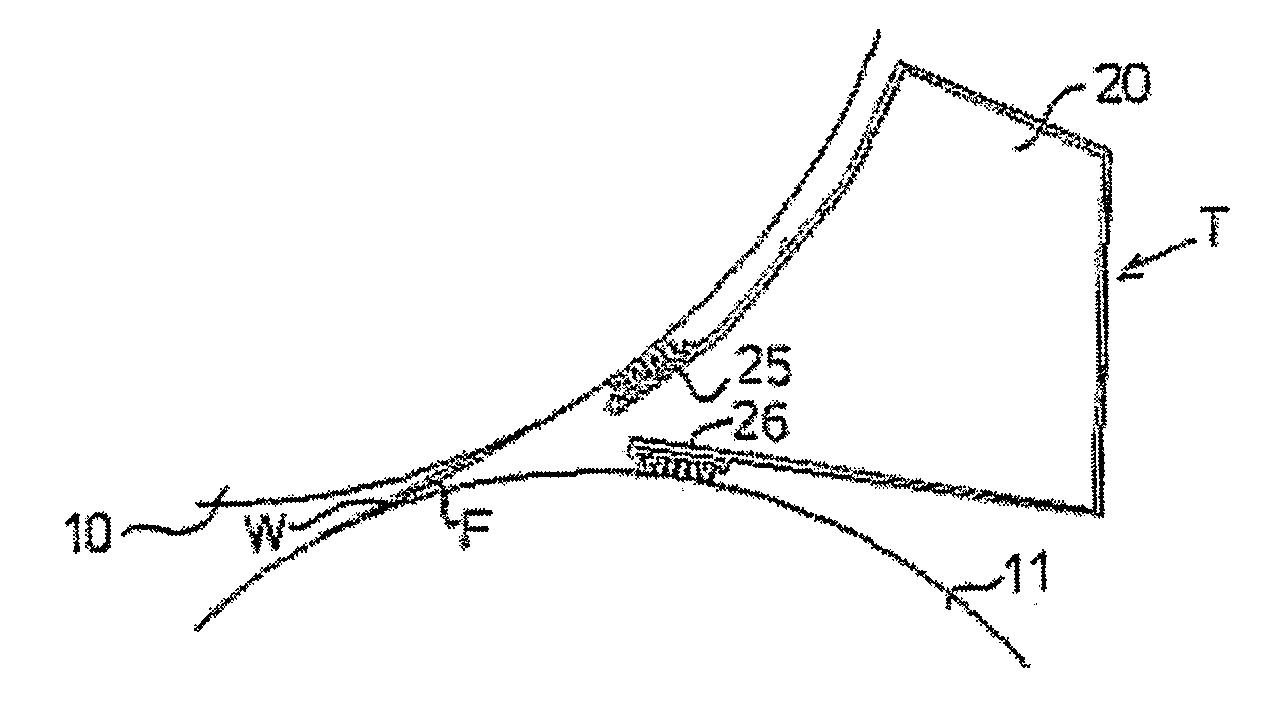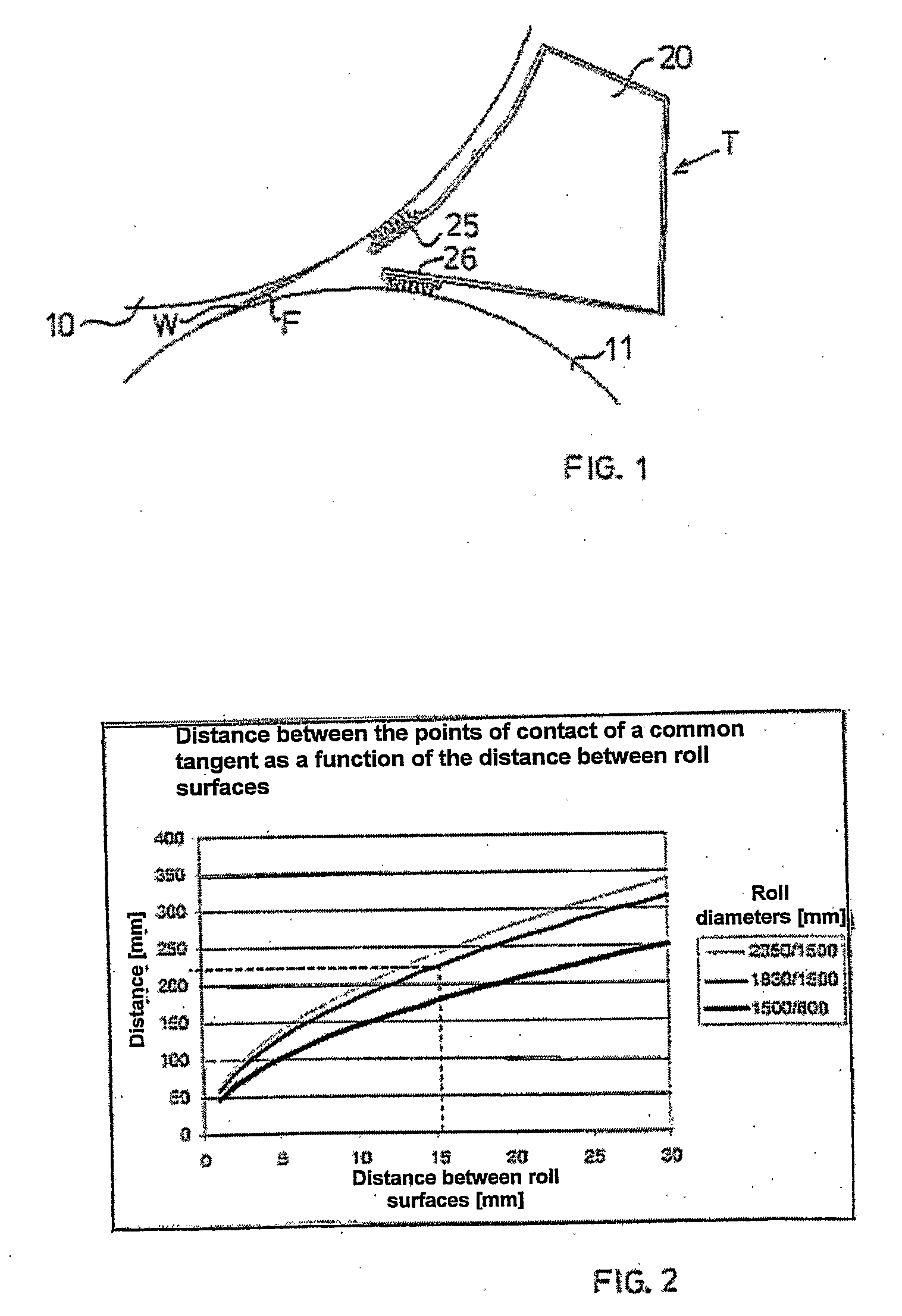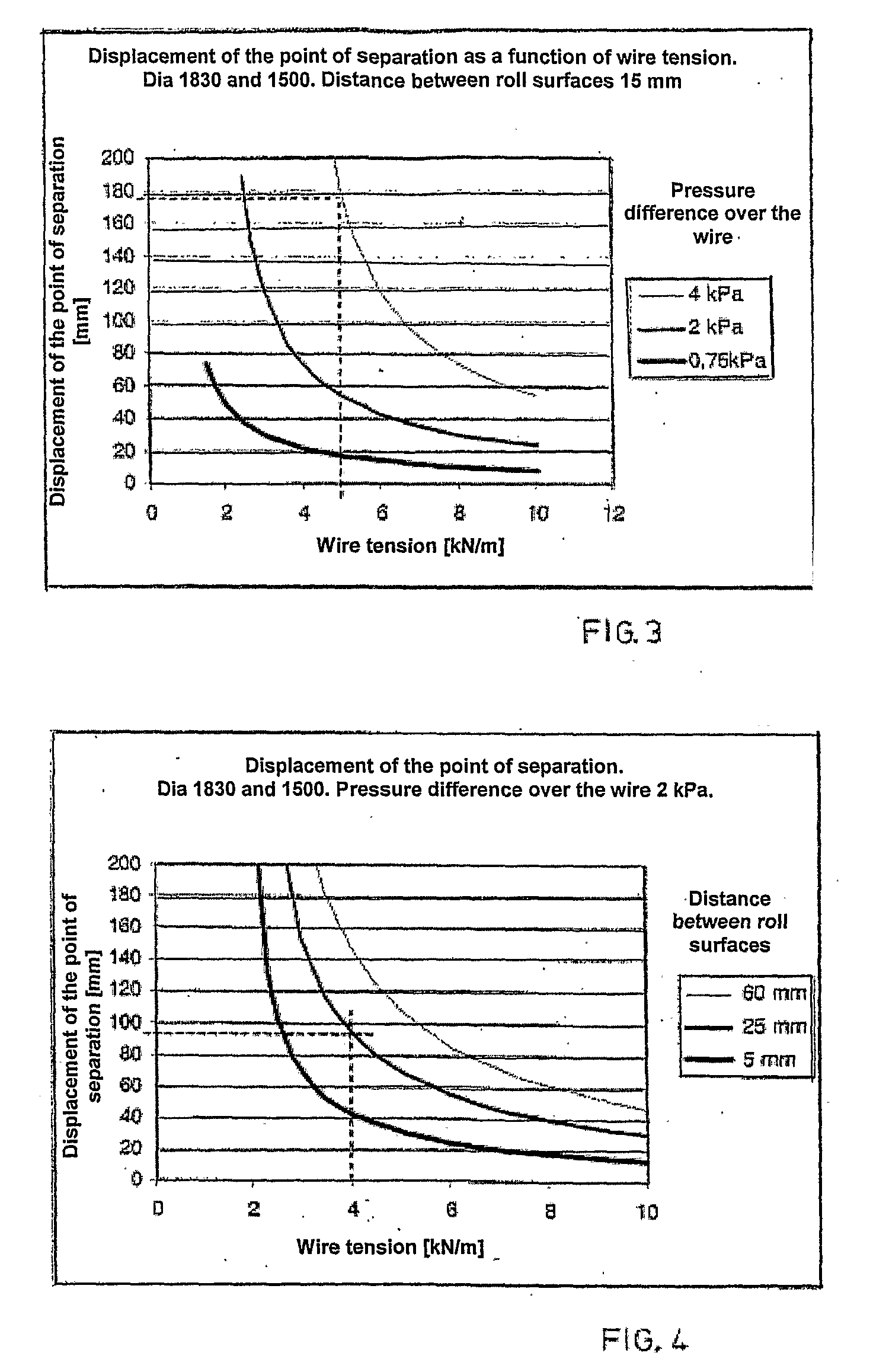[0010]An object of the invention is to provide a method and a device in a dryer section of a fiber-web machine, such as a paper or board machine, in which attempts have been made to eliminate and / or minimize the above-noted problems associated with the state of the art, in particular with the bending of the drying wire when it is passed from a drying cylinder to a reversing cylinder in a drying group applying single-wire draw and when a runnability component is used in this connection to improve runnability.
[0011]In accordance with the invention, a runnability component is arranged at the transfer from a drying cylinder to a reversing cylinder in a drying group applying single-wire draw in a dryer section of a fiber-web machine, such as a paper or board machine, which runnability component is arranged to be sealed against the fabric-covered surface of the drying cylinder and against the fabric-free surface of the reversing roll, and, at the same time, the length of the wire run between the drying cylinder and the reversing roll is minimized. By this means, the bending of the wire is reduced and, at the same time, wear of the seals of the runnability component is reduced and, in addition, runnability is improved on said run. Also, as compared to the runnability components of high negative pressure available on the market, for example, runnability components of the type marketed under the trademarks HiRun and Prorelease having at least two seals on the run of a flexible fabric, an additional
advantage obtained from an arrangement of a single seal on the run of the fabric from a cylinder to a reversing roll is the fact that the possible bending of the runnability component can be arranged to be parallel with the cylinder / wire surface by the selection of the axis of
inertia, so that the seal does not wear the wire or vice versa, but the bending is received by a flexible / self-adjusting sealing arrangement on the reversing cylinder, and so that the bending does not change the runnability situation nor the negative pressure. In this way, the invention makes it possible to avoid bending problems as compared with the state-of-the-art runnability components because a great suction effect is surprisingly applied to a gap situated between the wire and the reversing cylinder and closing on the reversing cylinder and, at the same time, to an opening gap between the cylinder and the wire with the same negative pressure effect, and not directly against the wire and the drying cylinder only at the opening gap of the cylinder and the wire.
[0012]The runnability component in accordance with the invention is advantageously provided with a seal based on mechanical sealing. It is also possible to use a sealing arrangement based on blows or on a combination of mechanical sealing and blowing sealing. In the arrangement in accordance with the invention, the distance of the seals of the runnability component to the drying cylinder surface remains constant, whereby possible air leakages and wear of the seals wearing with the flexible fabric are eliminated because the seal to be situated against the wire can be placed outside the bending range in question as compared with an arrangement having all seals on a long flexible fabric run. In addition, the arrangement in accordance with the invention allows a smaller pocket space, i.e. a smaller space between adjacent drying cylinders and a reversing cylinder between them, so that the air amounts used in the runnability component for producing a required negative pressure are smaller, as compared with the prior art arrangements, typically the air amount required is of the order of 200-600 m3 / hm.
[0013]Different suction duct arrangements according to the required negative pressure can be accomplished on the negative pressure zone in accordance with the invention, said zone being directed at the gap closing on the reversing cylinder and confined by the drying cylinder, the reversing cylinder and the drying wire. A negative pressure effect / suction can be produced only from the reversing cylinder, only from the runnability component, or from both of them, of which the last-mentioned alternative is particularly suitable for situations in which a high negative pressure is needed, i.e., for example, in wide and fast machines. Moreover, the required negative pressure varies between different paper grades and in different drying stages, typically, at the beginning of the dryer section, a higher negative pressure is needed than at its end. Further, the quality of paper can be improved by arranging a smaller draw difference for the draw from the press section to the dryer section, in which case the negative pressures in the runnability components at the beginning of the dryer section must be still higher to maintain runnability.
[0015]In accordance with one advantageous additional feature of the invention, the reversing cylinder is arranged to be movable such that the distance of the reversing cylinder with respect to the drying cylinder can be adjusted and in such a way that the reversing cylinder can be arranged to avoid a damaged paper / wire portion of possibly several
layers not able to pass through a minimum gap between the drying cylinder and the reversing cylinder, which gap is determined by the combined thickness of the wire and the web, being about 1 mm. This advantageous additional feature also makes it possible to move the reversing cylinder, for example, to a wire replacement position, for example, at a distance of 30 mm.
 Login to View More
Login to View More  Login to View More
Login to View More 


